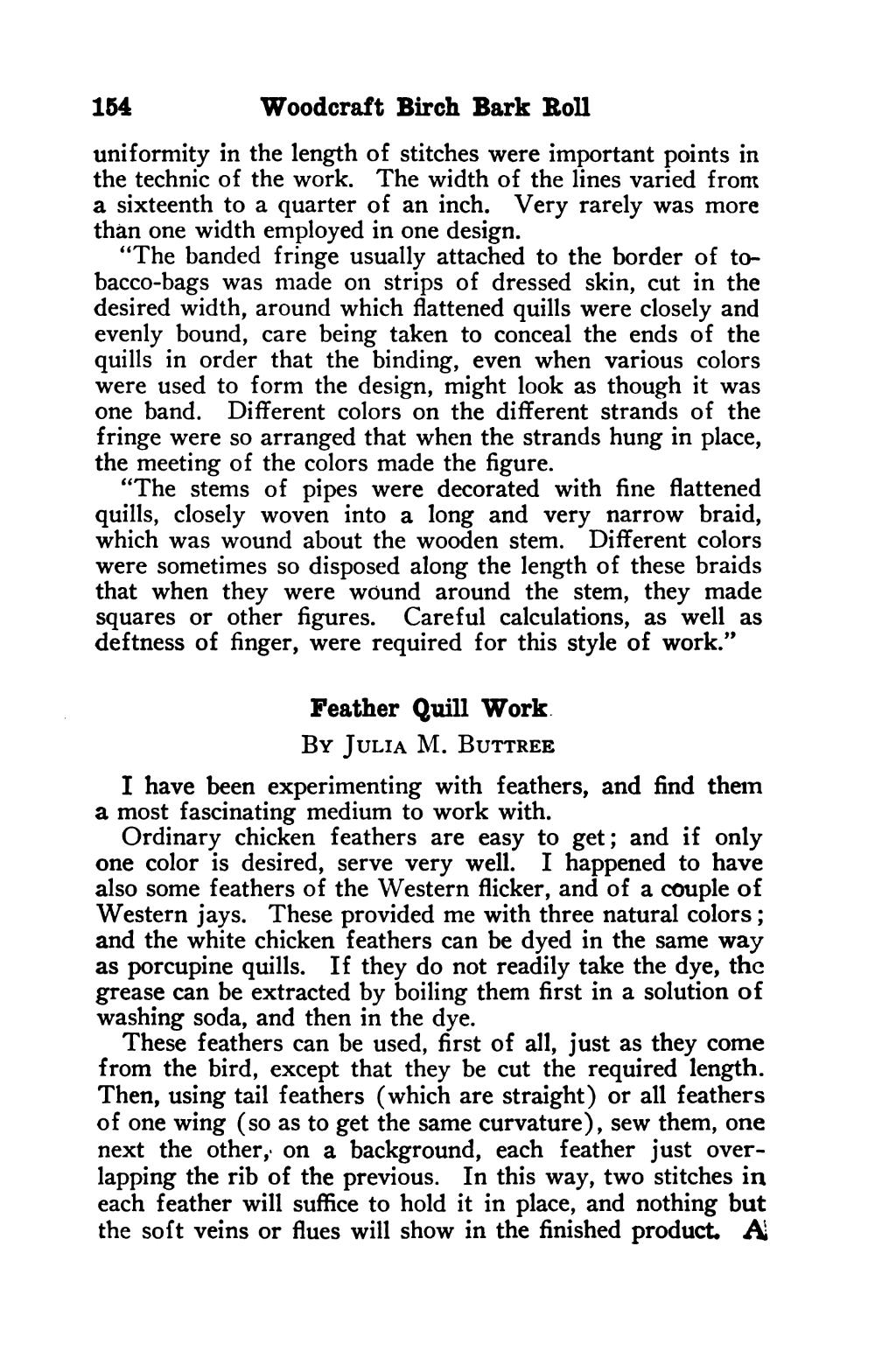154 Woodcraft Birch Bark Roll uniformity in the length of stitches were important points in the technic of the work. The width of the lines varied from a sixteenth to a quarter of an inch. Very rarely was more than one width employed in one design. “The banded fringe usually attached to the border of to- bacco-bags was made on strips of dressed skin, cut in the desired width, around which flattened quills were closely and evenly bound, care being taken to conceal the ends of the quills in order that the binding, even when various colors were used to form the design, might look as though it was one band. Different colors on the different strands of the fringe were so arranged that when the strands hung in place, the meeting of the colors made the figure. “The stems of pipes were decorated with fine flattened quills, closely woven into a long and very narrow braid, which was wound about the wooden stem. Different colors were sometimes so disposed along the length of these braids that when they were wound around the stem, they made squares or other figures. Careful calculations, as well as deftness of finger, were required for this style of work.” Feather Quill Work. By Jutta M. BuTTREE I have been experimenting with feathers, and find them a most fascinating medium to work with. Ordinary chicken feathers are easy to get; and if only one color is desired, serve very well. I happened to have also some feathers of the Western flicker, and of a couple of Western jays. These provided me with three natural colors ; and the white chicken feathers can be dyed in the same way as porcupine quills. If they do not readily take the dye, the grease can be extracted by boiling them first in a solution of washing soda, and then in the dye. These feathers can be used, first of all, just as they come from the bird, except that they be cut the required length. Then, using tail feathers (which are straight) or all feathers of one wing (so as to get the same curvature), sew them, one next the other, on a background, each feather just over- lapping the rib of the previous. In this way, two stitches in each feather will suffice to hold it in place, and nothing but the soft veins or flues will show in the finished product. Ai
Stránka:roll 1931.djvu/170
Z thewoodcraft.org
Tato stránka nebyla zkontrolována
